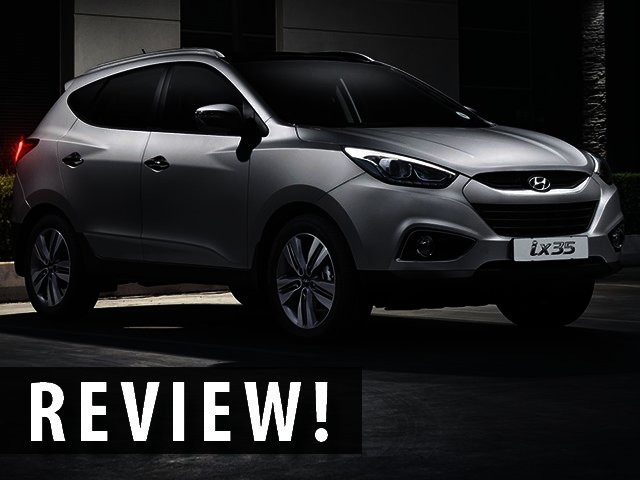Only the eagle-eyed might have spotted a slightly updated Hyundai ix35. Trevor van de Ven from ZA Car [www.zacar.co.za] finds out whether the updates are enough to fight off the tough competition.
You’d be forgiven for having missed the facelift of the Hyundai ix35, introduced in March 2014, mainly because the exterior enhancements were so subtle only a keen eye would have noticed.
Basically, apart from some shiny new alloy wheels, the updated ix35 received new headlight housings that sport LED daytime running and a set of stylish LED tail lamps, and that’s about it.
The other enhancements are skin deep, most notably in the quality of the materials used in the cabin. Though on a par at the time, the first ix35 was quite ‘plasticy’, and very ‘pleathery’. Being one of only a few new affordable entrants into the compact SUV space in 2010, car and MPV buyers flocked into showrooms to get themselves some “higher seating, go anywhere, but still rides well on tar” love.
I don’t think that dealers are struggling to move the ix35 off showroom floors, but its competition is good, so good that the four-year-old ix35 is starting to show its age.
What’s new?
After a week behind the wheel of the R485 000 range-topping ix35 R2.0 (diesel) 4x4 Automatic ‘Elite’, it was easy to see how far the car had come in four years. While fundamentally the 130 kW and 392 Nm diesel lump has not changed, the car feels altogether more refined. It was a benchmark engine in 2010, but now it’s the status quo.
The materials appear to be up to European standards and the Elite and Executive models include a 4.3” monitor for infotainment and parking camera duties. And there are multiple options for connecting your phone – USB, Aux, and Bluetooth audio streaming – that performed seamlessly using an iPhone. Sometimes the challenge is Android devices, but Bluetooth streaming should alleviate this hassle.
.jpg)
The six-speed automatic and selectable all-wheel drive in our test unit provided for a smooth drive with surefooted handling, although all-wheel drive comes at a nearly R100 000 premium over the similarly specced two-wheel drive. The 392 Nm of torque available from 1800 rpm makes highway cruising and overtaking a brisk affair, just add gas and off you go. Quickly.
A cool feature to appear in the Elite and Executive models that I first experienced in the new Kia Koup is the FLEX STEER system. This gives the driver the option to select the preferred steering feel from Normal, Sport or Comfort modes. In practice it worked well, whether it becomes a novelty I guess remains to be seen.
.jpg)
Is it worth the money?
Those trying to sell cars or compact SUVs in the half a million rand range, knows it’s a tough segment to compete in. A R485 000 price lands the R2.0 4x4 Automatic Elite in the premium end of the compact SUV segment, playing in the sandpit with the likes of the Audi Q3, BMW X1 and even the Mercedes Benz GLA. Here arguments about spec levels, size and value are settled by the logo on the key fob.
Sadly, the enhancements have not given the bells-and-whistles R2.0 4x4 Elite Auto ix35 any clear advantage.
While it’s a great car that benefits from some much-needed enhancements, the sweet spot with the ix35 is in the mid R300 000 to 400 000 range. Here you will find the new 1.7 diesel Premium Manual and 2.0 Petrol Elite Auto which hold true to Hyundai’s perception of good quality and value for money.
.jpg)
Quick Specs: Hyundai ix35 R2.0 4x4 Elite Automatic (Diesel)
Engine: 2l turbo diesel
Power: 130 kW @ 4000 rpm
Torque: 392 Nm @ 1800-2500 rpm
Transmission: 6-speed automatic, electronic 2WD/AWD
Claimed Consumption: 7.2l/100kms (bank on about 7.6l/100kms)
Service Plan: 5-year/90 000kms (15 000 service intervals)
Warranty: 5-year/150 000
Price: R484 900




